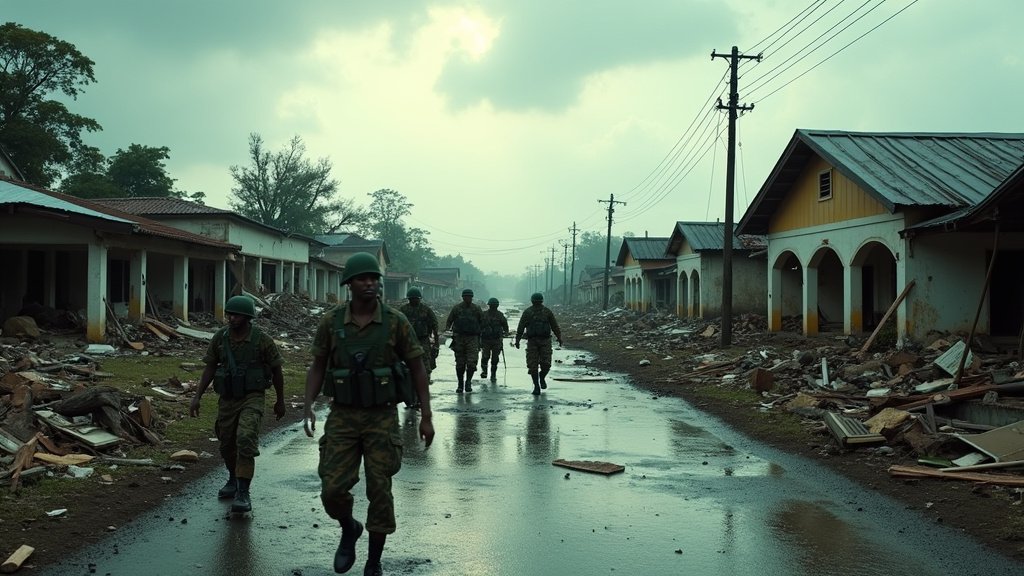Jamaica Confirms 32 Deaths as Hurricane Melissa’s Devastation Unfolds
KINGSTON, Jamaica – The official death toll from the catastrophic Hurricane Melissa has climbed to 32, Jamaican officials announced Monday, as the nation grapples with widespread destruction and the immense task of recovery following the Category 5 storm’s brutal landfall on October 28. This grim statistic highlights the devastating impact of Hurricane Melissa Jamaica. Eight additional unconfirmed deaths are currently under investigation by the Jamaica Constabulary Force (JCF) and the Jamaica Defence Force (JDF), raising concerns that the final toll for Hurricane Melissa Jamaica could be even higher.
Minister of Education, Skills, Youth and Information, Senator Dr. Dana Morris Dixon, described the ongoing situation as “very painful,” acknowledging that the number of fatalities is expected to increase as search and recovery efforts continue in the hardest-hit areas of western Jamaica. The devastating news serves as a grim headline for the island, which is still reeling from the most powerful hurricane to make landfall in its recorded history. The impact of Hurricane Melissa Jamaica is profound.
Unprecedented Destruction and Loss from Hurricane Melissa Jamaica
Hurricane Melissa struck Jamaica with ferocious winds of 185 mph, unleashing catastrophic winds, torrential rainfall, and a life-threatening storm surge. The storm carved a path of devastation across the island’s western and southern parishes, including St. Elizabeth, St. James, Trelawny, Manchester, Hanover, and Westmoreland. Reports indicate extensive damage to homes, critical infrastructure, and essential services. Widespread flooding, landslides, and power outages have left many communities isolated and without communication for days. In hard-hit areas like Black River, roads remain obstructed by debris, and critical infrastructure has been severely damaged, exacerbating the humanitarian crisis caused by this natural disaster Jamaica.
Approximately 140,000 people were cut off following the storm due to impassable roads and overwhelming debris, according to official reports. Power outages affected up to 77% of the island, disrupting communication and access to essential services, including healthcare facilities. The sheer scale of destruction is a stark reminder of the hurricane’s power, which has been ranked as the strongest to hit Jamaica since Hurricane Gilbert in 1988. The lingering effects of Hurricane Melissa Jamaica are evident.
Urgent Rescue and Recovery Efforts for Hurricane Melissa Jamaica
In the immediate aftermath, the Jamaica Defence Force (JDF) and the Jamaica Constabulary Force (JCF) deployed helicopters for the grim task of recovering victims’ bodies. Rescue and aid workers are fanning out across the island, distributing much-needed food and water to communities that have been isolated since the hurricane struck. International aid has begun arriving, with the United Nations allocating $4 million from its Central Emergency Response Fund (CERF) to bolster humanitarian operations. The World Food Programme (WFP) is actively distributing emergency food supplies, aiming to reach up to 200,000 people in Jamaica with urgent food needs.
The International Federation of Red Cross and Red Crescent Societies (IFRC) has dispatched significant humanitarian aid, including shelter kits, solar lamps, and tarpaulins, to support affected communities. The U.S. Army has also deployed helicopters to assist with relief efforts, reaching remote areas that are difficult to access by land. Efforts are underway to restore electricity and water services, a crucial step in the long Jamaica recovery process following Hurricane Melissa Jamaica.
Government Response and Future Preparedness for Hurricane Melissa
Prime Minister Andrew Holness declared Jamaica a “disaster area” in the wake of the storm, empowering authorities with expanded powers to manage the crisis. The Jamaican government is also establishing a national registry for volunteers and conducting household damage assessments to determine the scope of financial assistance required. Beyond immediate relief, discussions are underway to provide crucial mental health support for individuals traumatized by the hurricane’s impact.
Recognizing the profound lessons learned from Hurricane Melissa, the government has pledged to undertake a comprehensive review and restructuring of Jamaica’s disaster preparedness and response framework. This initiative aims to enhance the nation’s resilience against future extreme weather events, acknowledging that preparedness must continuously evolve. The country’s Finance Minister highlighted existing financial protection mechanisms, including insurance policies and catastrophe bonds, designed to accelerate recovery in the face of such devastating natural disasters.
Economic Repercussions and the Road Ahead for Jamaica Recovery
The hurricane’s impact poses a significant threat to Jamaica’s vital tourism industry, with the peak winter season just weeks away. Officials are racing to repair hotels and clear debris in tourist areas, hoping to mitigate economic losses. Despite the widespread damage, all international airports have reopened and are receiving commercial flights, signaling a step towards normalcy. The aftermath of Hurricane Melissa Jamaica presents a monumental challenge.
As recovery efforts continue, the focus remains on supporting affected communities, rebuilding infrastructure, and addressing the long-term social and economic consequences of Hurricane Melissa. The resilience of the Jamaican people will be tested in the months and years ahead as the island nation strives to rebuild and emerge stronger from this unprecedented natural disaster. The path to full Jamaica recovery will be long after the devastation of Hurricane Melissa.

